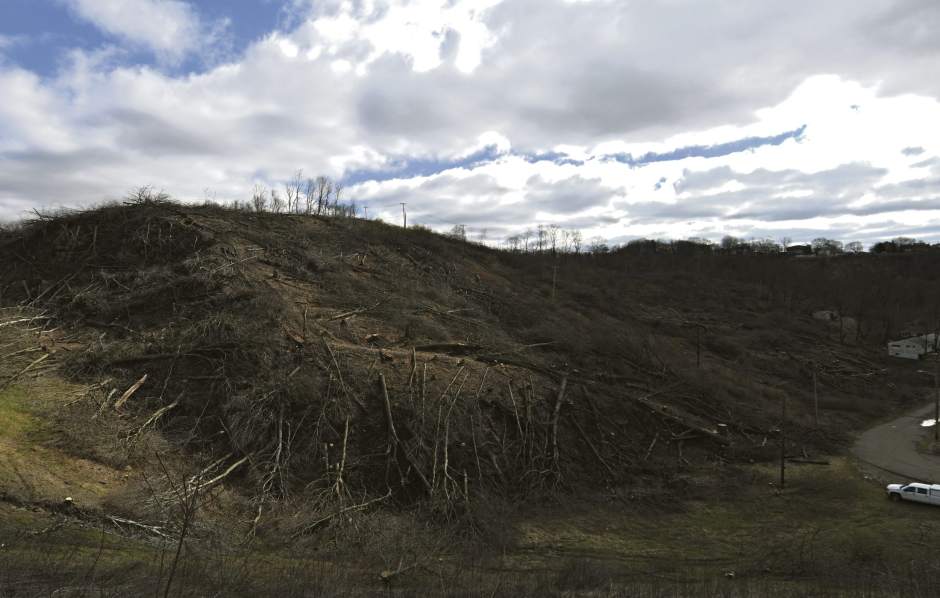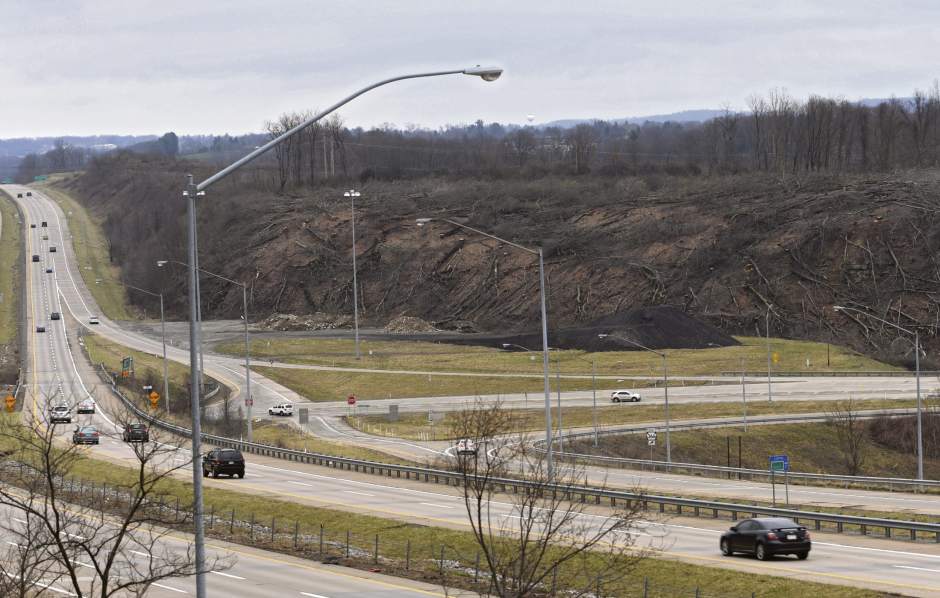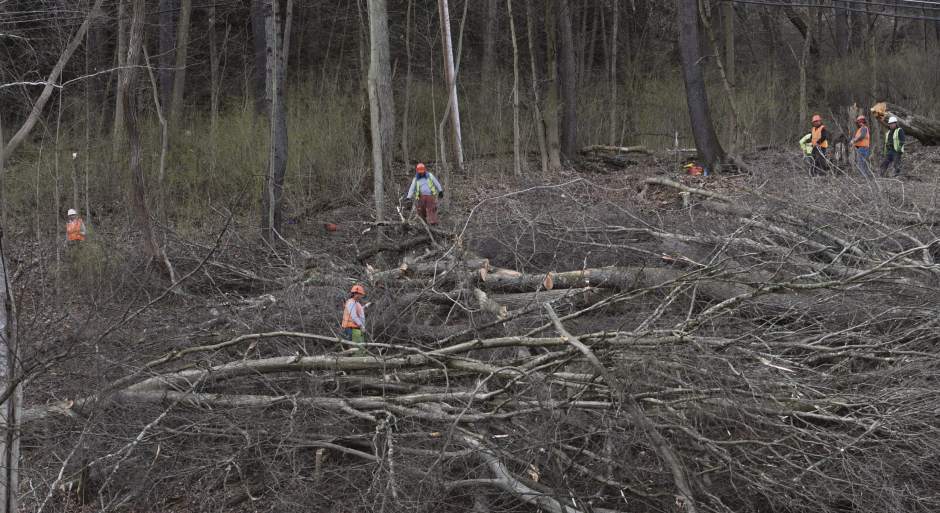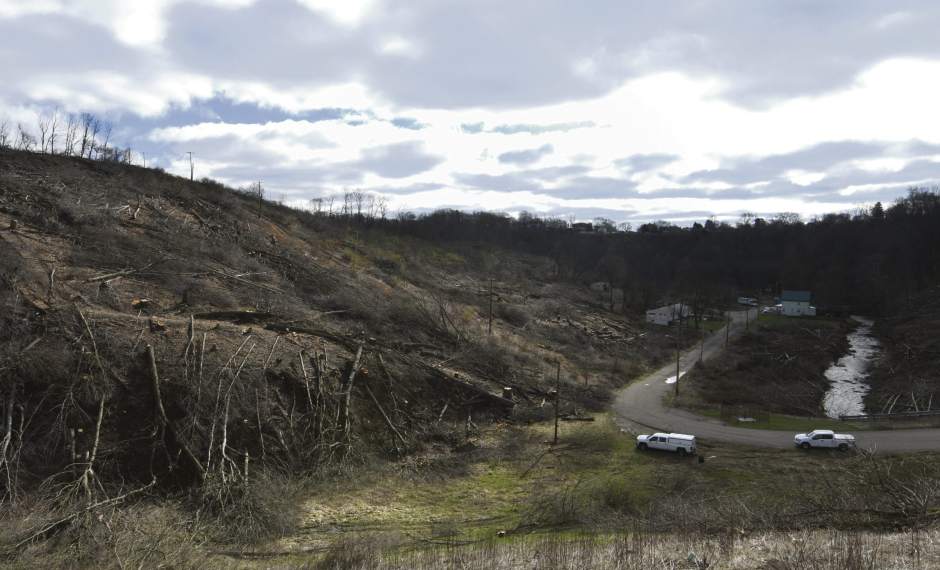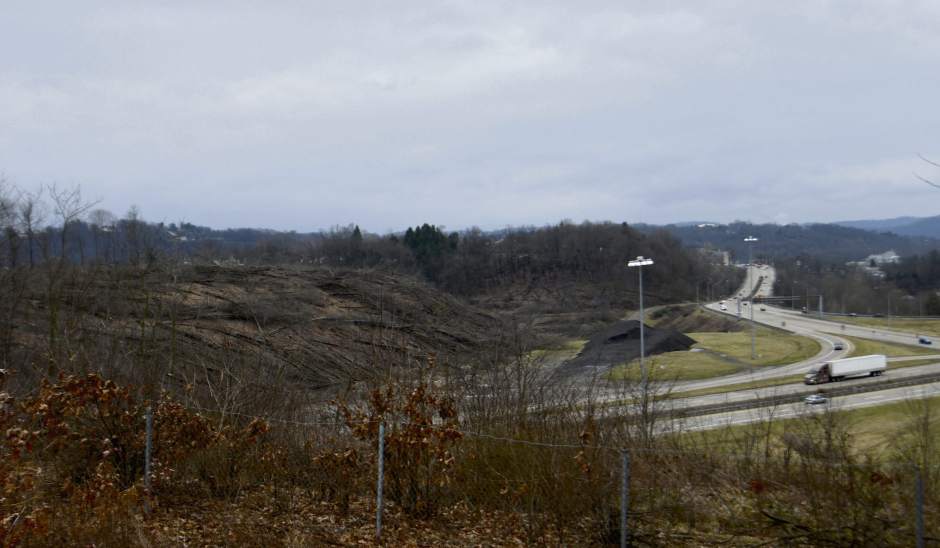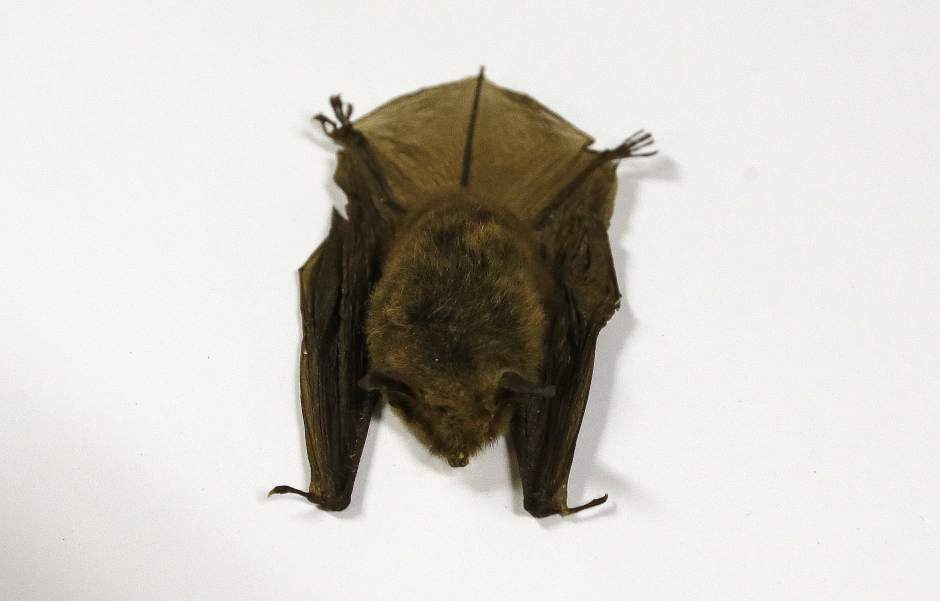Endangered bats' nesting site cleared from Harrison area slated for development
Trees that are the nesting home to an endangered species of bats have been hurriedly cleared from 45 acres of land off Route 28 in Harrison that's the proposed site of an office park.
Strange as it may seem, the action is intended to protect the bats.
Northern long-eared bats soon will emerge from their winter hibernation in caves and mines to begin the mating season, and the trees near Bull Creek and Pleasant roads are where many of them will nest. Clearing the trees before they return allows the bats to find new homes and helps protect their offspring from death.
“The concern is that a bat may occupy that tree and produce young that would be unable to fly away if the tree were to be brought down after mating season,” said Meagan Racey, a spokeswoman for the U.S. Fish and Wildlife Service.
R&Z Harrison Properties hopes to build 20 to 25 office buildings on the property. The site is near where Harrison, Tarentum and Fawn meet, in an area sometimes known as Job's Hole.
Construction isn't expected for up to two years, according to project manager Brian Clark, but the developer is coordinating with state and federal agencies to minimize the impact on the bat species as plans are formulated for the development.
Tree-cutting in late spring and summer in bat territory could have an adverse effect on the creatures, Racey said, so clearing the land must be completed by March 31 under federal regulations. Otherwise, the developer would have had to wait until Nov. 15.
“In parts of Pennsylvania now, because of the white-nose syndrome affecting that bat population, the Department of Environmental Protection and the U.S. Fish and Wildlife Service have all gotten together to protect the bat's habitat,” Clark said.
U.S. Fish and Wildlife Service biologist Pam Shellenberger said the northern long-eared bat has been hit hard by white-nose syndrome, a deadly disease caused by a fungus that infects the skin of hibernating bats. The bat was listed as a threatened species in 2014 because of population declines.
White nose syndrome is thought to have killed more than 6.7 million bats since its discovery in New York in 2006. Infected bats are more likely to spend hibernation season awake, using energy, and as a result they lose body fat in winter when they can't find insects to eat, she said.
One of the best ways to protect bat colonies threatened by development is to encourage them to roost elsewhere, she said.
“We can't just say ‘Don't cut down any trees' — that wouldn't be practical,” Shellenberger said. “Instead, we try to minimize impact to bats. If there is tree clearing that needs to occur, we say, “If you could remove the trees while (bats) are in the cave or mine, at least we know they aren't in the trees at the time.”
When bats emerge from hibernation, their first task is finding a place to raise their young, she said, and for many species of bats native to Pennsylvania, that means finding a standing tree. If bats make their roosts in trees that are then cut down, it could be very damaging to the population.
Racey said part of the problem is that bat species, unlike some other mammals, don't give birth to large litters.
“Bats really only produce one or two young,” Racey said. “If one dies, it can make a pretty big difference for the species. If four trees with four young living in them were cut down, we really could lose all four.”
Matthew Medsger is a Tribune-Review staff writer. Reach him at 724-226-4675 or mmedsger@tribweb.com.

